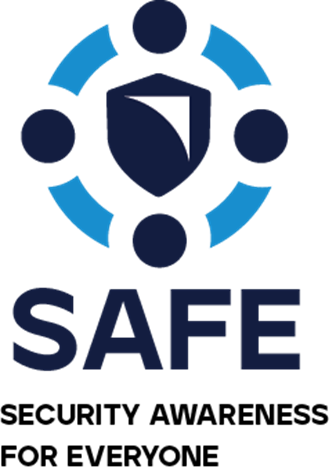The business of the modern Health Plan is highly complex and to be successful, plans often require the assistance and contribution of outside providers for a range of goods and services. Those outside vendors become an integral part of the organization’s path to success – and they are truly partnered for mutual success.
When businesses come to agreement on a Business to Business (B2B) product relationship, it is commonly asserted with great optimism that the entities will be entering into a “Partnership” that will maximize the value of the new offering. The idea of a working Partnership has such positive overtones that there is very little disagreement or energy around the launch of the engagement. The realization of this objective is typically the responsibility of an Account Executive, a Customer Success Executive or similarly situated role in the entity providing the service.
However, partnerships don’t just happen when a contract gets signed. It takes work, patience, commitment and a well-defined process to integrate the organizations. To accomplish the goal, there are several key factors that must be in place:
- A shared, commonly agreed upon plan to level set expectations
- Clear and consistent communications of the key aspects of the plan
- Accurate assessment of required resources – and deployment of same to execute the plan
- Well-defined metrics to track both the successful completion and risk of missing key milestones
PACER: The Key to Strong Partnerships
Large and complex organizations require a disciplined, formal approach to cultivating a healthy, functional partnership. One method that can help focus an organization’s energy is a program with a handy acronym: “P.A.C.E.R.”
PACER creates a roadmap to drive positive interaction with clients to ensure consistency and a disciplined approach to client interactions:
1. PLAN – Articulate the recommendations of the supplying entity for improved efficiency and efficacy
2. ALIGN – The supplier goals and objectives with those of the customers
3. COMMUNICATE – Shared commitments and deadlines clearly and concisely throughout both organizations
4. EXECUTE – Work the plan in accordance with agreed upon timelines and accountabilities
5. REPORT – Both positive progress and challenges
1. PLAN:
The first step in planning is an introspective look by the supplier at where you are compared to where you would like to be. Not just in terms of new product opportunities, but also as it relates to client success – i.e. is your product operating at an optimal level for your customer?
One way to think about this plan is as an internal “Wish List” – i.e. “I wish the client would_______”
-
-
- Start doing X
- Stop doing Y
- Continue doing Z
- Add ______ ancillary product(s)
-
This plan should be created in cooperation with as large a group of your colleagues as possible. Solicit input actively and aggressively to encourage an honest appraisal of what is needed. You may find that your colleagues are resistant to communicate a deficiency at the client under the adage that “the customer is always right.” While client deference is always important, it is equally important to have an accurate assessment of what is needed to ensure client success – even if the needed changes involve challenging the client point of view.
2. ALIGN:
Using the Plan created in Step 1 as a guidepost, the next step is to Align those ideas with a Strategic Plan that you develop with the customer. The unique aspect of this process is that by going into the session equipped with a clear understanding of what your team feels will help maximize the, you will emerge with a collaborative document that maximizes the potential for Customer Success…which is the goal of this entire enterprise.
The aligned plan needs to be captured in a detailed, jointly prepared written document that includes an unambiguous list of shared objectives and an Action Plan with deliverable dates and accountabilities. The plan is co-authored by the highest-ranking individuals who are engaged in the partnership – and who share authority and responsibility for its success.
3. COMMUNICATE:
The Plan needs to be distributed and promoted with great fan fair and appropriate resource commitments from the leaders. To maximize the impact of the Plan, there can be no ambiguity regarding the goals and objectives, responsible players and the leadership support. There is built in accountability in the Action Plan – but the impact of that accountability will be limited if there is not a sense of commitment and shared understanding of the Plan.
We live in a digital world, but one technique that can help create a breakout communication strategy is the creation of a hard copy notebook of the plan – with the authors identified on the cover – and delivered to key team members via an overnight package. Email distributions are often ignored or minimized – nothing gets attention these days like an overnight package that arrives at the desk (or front door if virtual) of a team member. Furthermore, if you create a professional binder with a recognizable title and visuals, it will live on a desk and serve as a regular reminder.
And as George Bernard Shaw famously said, “The difficult thing about communication is the illusion that it has been completed.” Continual reinforcement of the importance and timeliness of the Plan will help maximize the potential for success.
4. EXECUTE:
All the work that is completed in the first three steps is simply a prelude to the ACTUAL work of PACER – which is to Execute the Plan.
If the Action Plan has been adequately prepared, every team member should have a clear view of what they need to do and when to do it. And if the team is clear on what the other members are doing, it is a self-monitoring process. If I know that what I am doing impacts what you are doing – and vice-versa – there is a shared accountability. And what is unique in this particular construct is that a jointly developed plan between supplier and receiver of the service means the successful execution is a team sport – played to the benefit of both organizations!
5. REPORT:
Keeping everyone clear on the progress throughout the course of the engagement helps to ensure that expectations are met – minimizing surprises. Reporting can take many forms – from casual informal discussions in daily “Stand Up” meetings to deep dive reviews of the Action Plan deliverables as milestones come up.
Most importantly, regular accurate and meaningful reporting will ensure that future PACER reviews will build on the successes of the current undertaking and learn from any shortfalls experienced.
For Customers to Succeed with your product, both parties need to commit to an ongoing, active and iterative partnership model in which there is a feedback mechanism for continuous improvement, and honest internal appraisal of progress. The PACER provides a framework within which organizations can collaborate and keep the Partnership fresh and successful.
Customer Success at HealthEdge
HealthEdge is very proud of the 100+ organizations that we service with our suite of state-of-the-art technologies that enable the digital future of our health plan customers. We have a team of professionals in our Customer Success group that are committed to the Planning and Execution of a well-organized Plan – and to forming truly workable partnerships. Learn more here.







